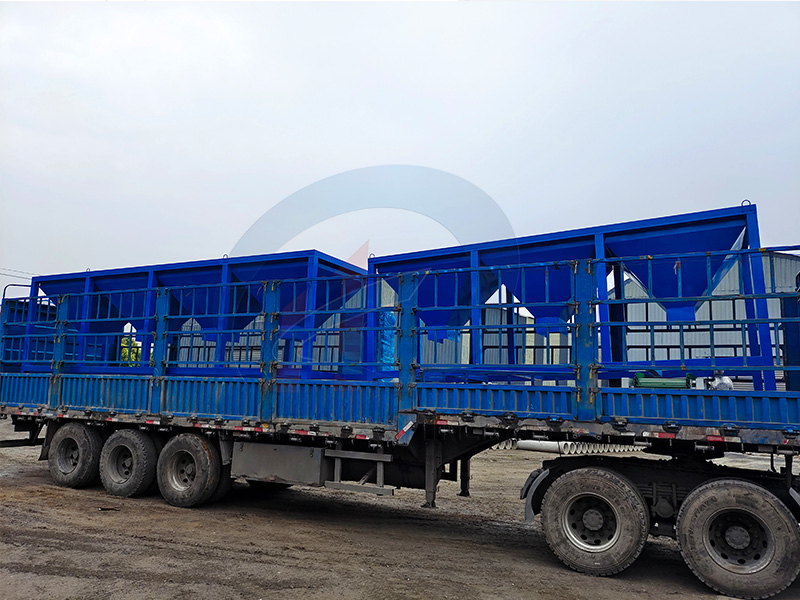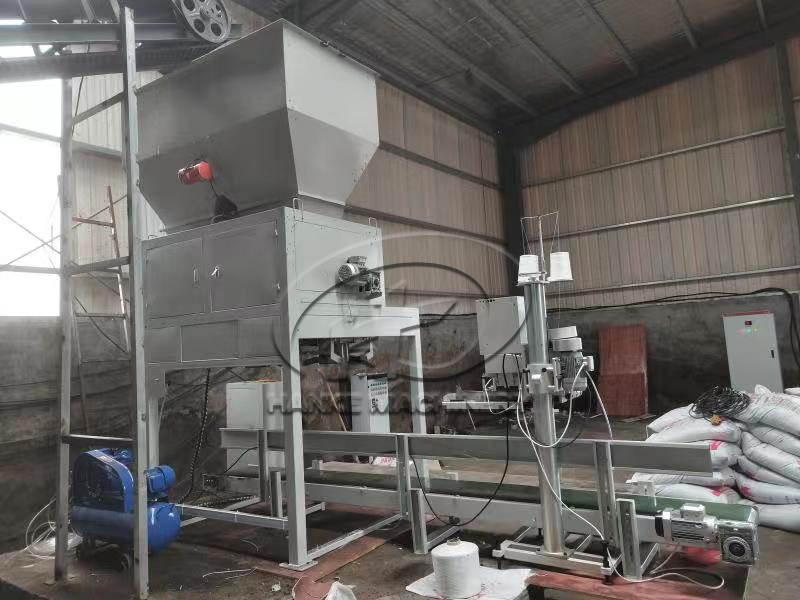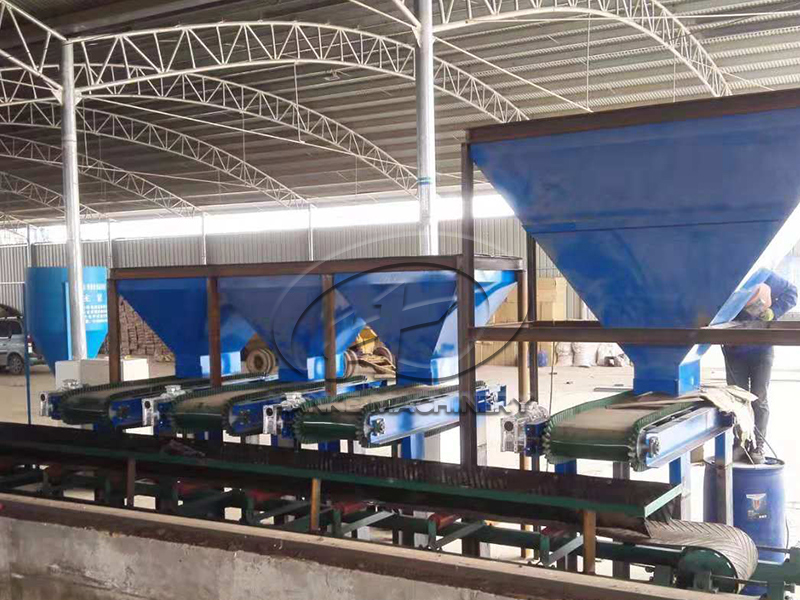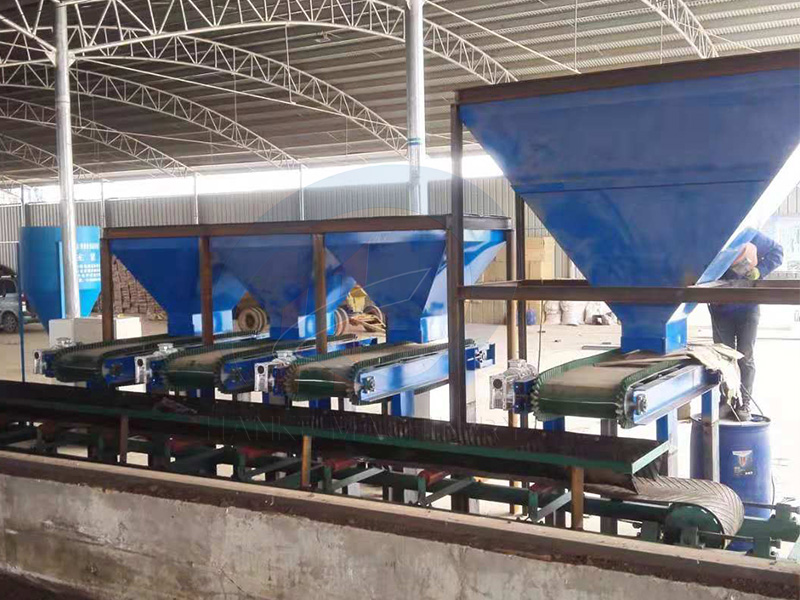 HOME > News > Industry News > Should a powder water-soluble fertilizer factory choose a dynamic batching scale or a static batchin
HOME > News > Industry News > Should a powder water-soluble fertilizer factory choose a dynamic batching scale or a static batchin Update time : 2025-06-26 Publisher:Zhengzhou Hanke Machinery
Whether a powder water-soluble fertilizer factory should choose a dynamic batching scale or a static batching scale depends on a comprehensive consideration of multiple dimensions such as production scale, precision requirements, cost control, and process adaptability. Dynamic batching scales are more suitable for large-scale continuous production, while static batching scales are more appropriate for small-batch and high-precision scenarios. The following is the specific analysis:
The features and applicable scenarios of static batching scales

Working principle: Batched ingredients, the materials are weighed in a static state, and after completion, they proceed to the next process.
High-precision requirements: The static batching scale achieves high-precision batching through successive weighing, making it suitable for scenarios with strict requirements for the addition of trace elements. For instance, when producing water-soluble fertilizers containing trace elements such as boron and zinc, the error of the static scale can be controlled within ±0.1% to ensure product quality.
Small-batch production flexibility: Static scales are suitable for multi-variety and small-batch production modes. For instance, during the R&D stage or in customized production, static scales can quickly switch formulas, reducing raw material waste. In addition, static scales take up little space and are suitable for factories with limited space.
Process stability: During the weighing process of a static scale, the material remains stationary and is less affected by the environment, making it suitable for production environments sensitive to dust. For instance, when producing high-concentration water-soluble fertilizers, static scales can prevent the problem of dust during the dynamic conveying process.
Advantages:
High precision (usually up to ±0.1% to 0.2%), suitable for formulas with strict ratio requirements.
Suitable for small-batch and multi-formula production, with flexible adjustment of raw material combinations.
It has strong anti-interference ability, is not affected by vibration or airflow, and is suitable for the characteristics of powdery materials that are prone to dust.
Limitations: The speed is relatively slow, and the machine needs to be stopped for weighing, which may affect the efficiency of continuous production.
Recommended scenarios:
Produce high-end water-soluble fertilizers (if trace elements, hormones, etc. are added, high-precision proportioning is required).
Small-scale production lines with multi-variety switching.
2. Features and applicable scenarios of dynamic batching scales
Working principle: Materials are continuously weighed during the conveying process (such as belt scales, loss-in-weight scales), and the flow rate is adjusted in real time.
Production scale and efficiency requirements: The dynamic batching scale achieves real-time measurement by continuously conveying materials and is suitable for large-scale continuous production scenarios. For instance, in a water-soluble fertilizer production line with an annual output of tens of thousands of tons, dynamic scales can be combined with belt conveyors or screw conveyors to achieve a batching speed of several hundred kilograms per minute, significantly enhancing production capacity. Its advantage lies in reducing downtime and waiting time, making it suitable for factories with a high degree of automation.
Process adaptability: The dynamic scale can be linked with equipment such as mixers and packaging machines to form a closed-loop control system. For instance, when producing water-soluble fertilizers containing trace elements, dynamic scales can adjust the proportion of each raw material in real time to ensure the stability of the formula. In addition, the dynamic scale supports simultaneous batching of multiple components and is suitable for the production of compound water-soluble fertilizers.
Cost and maintenance considerations: Dynamic scales require a relatively high initial investment, but in the long run, their high efficiency can reduce energy consumption and labor costs per unit of product. In terms of maintenance, sensors need to be calibrated regularly and the conveying pipelines cleaned, but the overall maintenance cost is controllable.
Advantages:
Continuous operation, suitable for large-scale continuous production, with high efficiency.
It has a high degree of automation and can be integrated with PLC/DCS systems to reduce manual intervention.
Limitations:
The precision is relatively low (usually ±0.5% to 1%), and the difference in fluidity of powdered materials may affect stability.
The sealing performance of the equipment is required to be high; otherwise, the sensor is easily affected by dust.
Recommended scenarios:
Single formula mass production (such as basic water-soluble fertilizer).
The production line has a high degree of automation, and the requirement for efficiency takes priority over precision.
3. Key decision-making factors
Precision requirements: If the product must strictly conform to the proportion of trace elements (such as 0.01% error), a static scale should be selected. If it is a conventional NPK formula, a dynamic scale can meet the requirements.
Production capacity scale: If the single-shift output is less than 10 tons, static scales can be considered. For continuous production of over 20 tons, it is recommended to use a dynamic scale.
Material characteristics:
When powdered materials are prone to moisture absorption and caking, static scales are easier to control.
If pneumatic conveying is required, a dynamic loss-in-weight scale may be more suitable.
Cost budget: The initial investment in dynamic scales is relatively high, but long-term large-scale production can reduce labor costs.
4. Suggestions for mixed schemes
Segmented batching: Static scales are used for core high-precision raw materials (such as chelated trace elements), while dynamic scales are used for basic raw materials (such as urea and potassium dihydrogen phosphate).
Upgrade option: Select a dynamic loss-in-weight scale with automatic correction function (such as using dual sensors), which can increase the accuracy to ±0.3%.
Overall:
Priority static batching scale: If producing multiple varieties of high-value-added water-soluble fertilizers or being sensitive to batching errors.
Priority dynamic batching scale: If the goal is to maximize production capacity and maintain a stable formula, strict process debugging and regular calibration are required.
It is recommended to conduct on-site tests on the compatibility of the two devices with the materials, with a focus on the influence of powder fluidity on the stability of weighing.

see details +

see details +

see details +

see details +

 Tel:+86 17319777703
Tel:+86 17319777703
 E-mail:hkautomaticpack@foxmail.com
E-mail:hkautomaticpack@foxmail.com
 Address:Xingyang City, Zhengzhou City, Henan Province.
Address:Xingyang City, Zhengzhou City, Henan Province.
Privacy Policy Copyright © Zhengzhou Hanke Machinery Equipment Co., Ltd Co., Ltd.